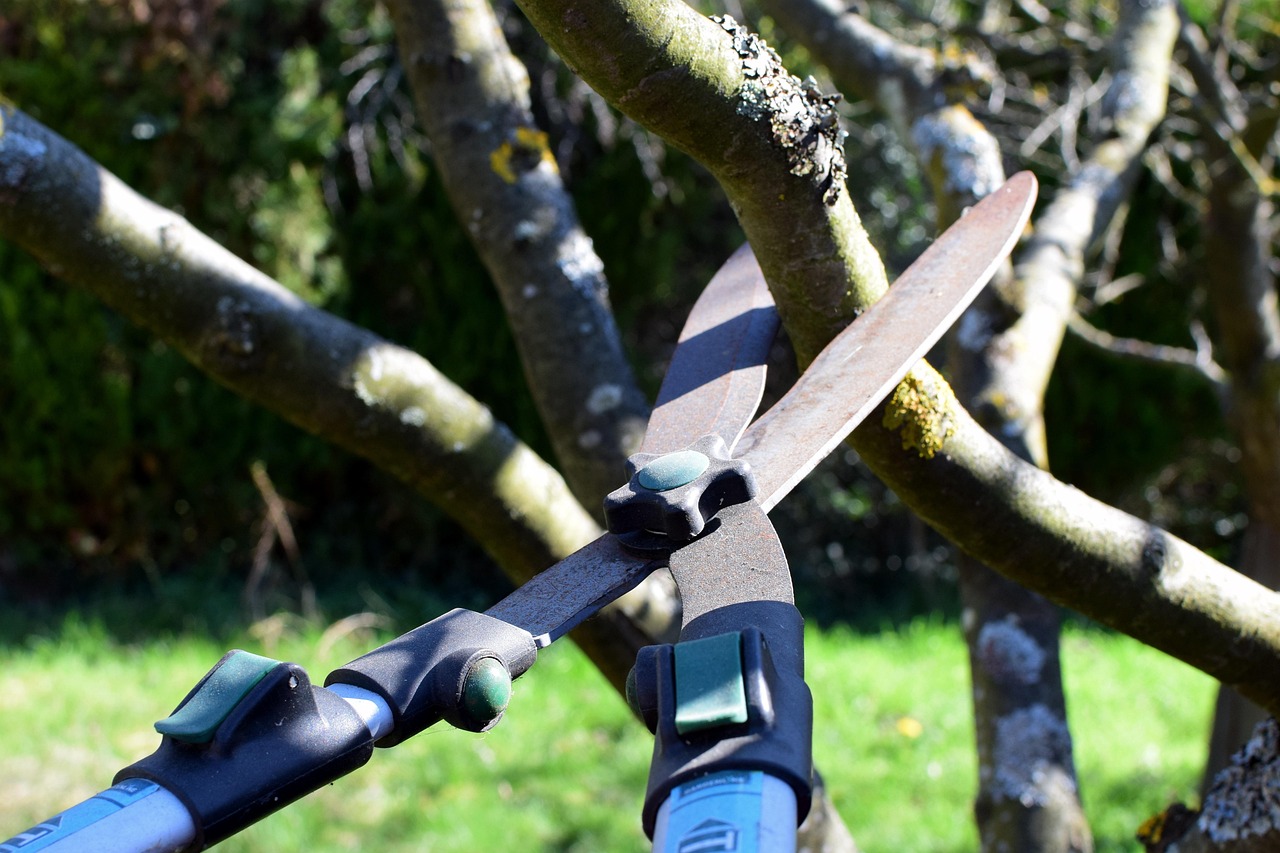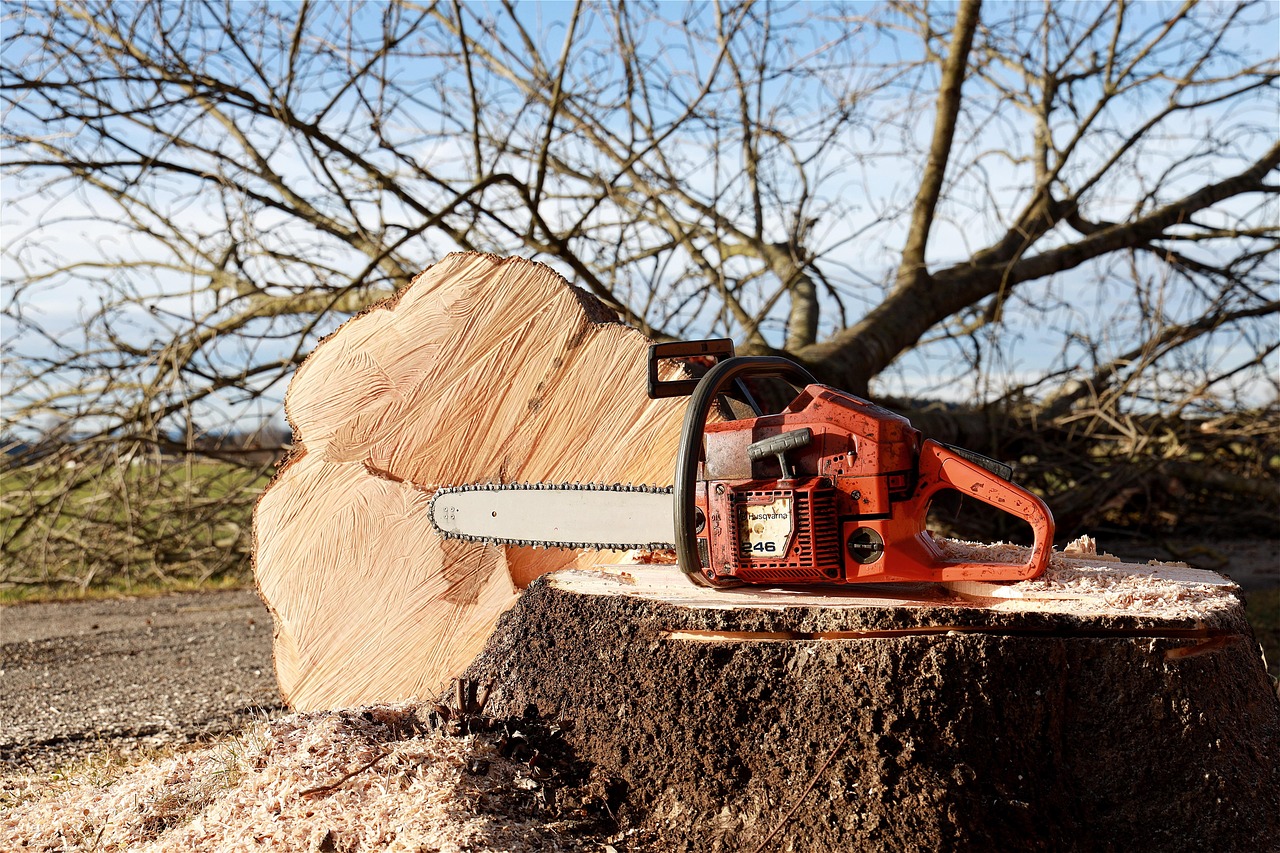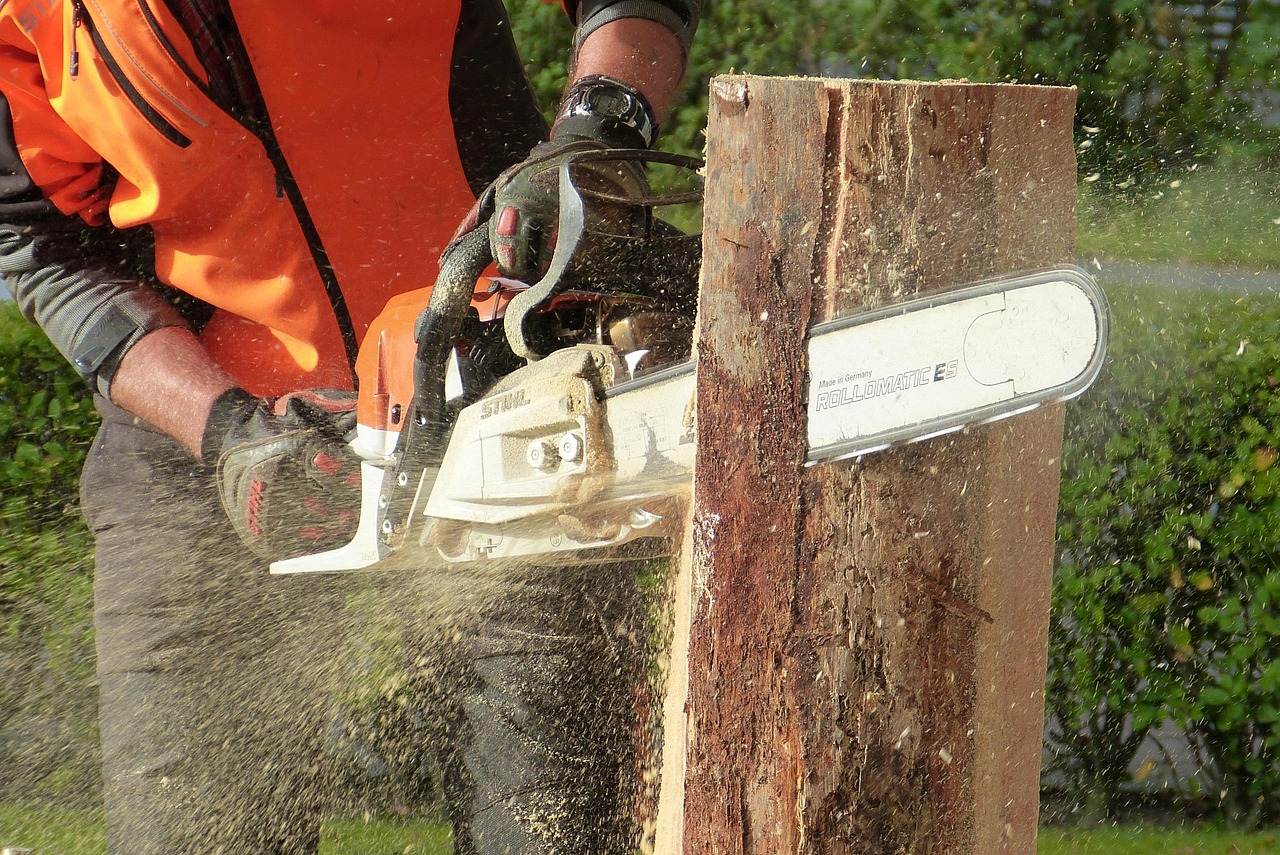Regular tree pruning is vital for maintaining healthy, resilient trees. It improves structure, promotes growth, enhances air circulation, and prevents hazards. Proper timing, techniques, and tools are essential for success. This practice not only benefits tree vitality but also boosts landscape aesthetics, property value, and supports environmental health.
Tree pruning is a crucial aspect of tree care that involves the selective removal of specific parts of a tree. This process can include cutting back branches, removing dead limbs, and thinning out foliage. Pruning is not just about aesthetics; it plays a vital role in the health and strength of trees. Understanding the benefits of tree pruning can help property owners make informed decisions about their landscape management.

Healthy trees are vital to our environment. They provide shade, improve air quality, and support wildlife. However, trees can become overgrown, infected with diseases, or damaged by weather events. Regular pruning helps mitigate these risks and promotes longevity. Below are some key benefits of tree pruning:
- Improved Tree Structure: Pruning helps shape young trees and encourages a strong framework that can support future growth.
- Increased Airflow: Thinning out dense foliage allows for better air circulation, reducing the risk of fungal diseases.
- Enhanced Sunlight Exposure: Removing excess branches ensures that lower leaves receive adequate sunlight, promoting healthy growth.
- Preventing Hazards: Removing dead or unstable branches can prevent accidents and damage to property during storms.
- Encouraging New Growth: Pruning stimulates new growth, resulting in a fuller and more robust tree.
The Importance of Timing in Tree Pruning
When it comes to tree pruning, timing is essential. Different species of trees have specific growth patterns and ideal windows for pruning. Some trees are best pruned in late winter or early spring before new growth begins, while others may benefit from summer pruning. Understanding the right time to prune can maximize the benefits and minimize stress on the tree.
Here is a simple table that outlines the best times to prune various types of trees:

| Tree Type | Best Pruning Time |
|---|---|
| Deciduous Trees | Late winter to early spring |
| Evergreen Trees | Late spring to early summer |
| Flowering Trees | After flowering |
| Fruit Trees | Late winter to early spring |
The benefits of pruning also extend to aesthetics. A well-pruned tree enhances the visual appeal of landscapes. This can increase property value and create a more inviting outdoor space. Homeowners often seek the expertise of professional arborists to ensure proper pruning techniques are used. These experts understand the unique needs of different tree species and can implement effective strategies for maintaining tree health.
Another significant advantage of tree pruning is disease management. Regular inspections during pruning sessions allow arborists to identify potential issues early. This can include signs of pests, diseases, or structural weaknesses. By addressing these problems promptly, property owners can protect their investment in landscaping and ensure the longevity of their trees.
It’s important to note that improper pruning techniques can harm trees. Over-pruning or making incorrect cuts can lead to stress, decay, or even death in severe cases. Therefore, understanding the proper methods and tools necessary for successful pruning is crucial. Homeowners should educate themselves on best practices or seek professional help if they are unsure.

In addition to health benefits, tree pruning also contributes to improved fruit production in fruit-bearing trees. Properly pruned trees can produce larger and higher-quality fruit due to better airflow and sunlight exposure. This not only benefits homeowners but also local wildlife that depend on these trees for sustenance.
Moreover, regular pruning can help maintain a tree’s size and shape, which is especially important for urban environments where space is limited. By keeping trees manageable, property owners can prevent conflicts with power lines, buildings, and other structures, enhancing both safety and aesthetics.
In summary, tree pruning offers numerous benefits that contribute to healthier and stronger trees. From improving structure and airflow to enhancing aesthetics and fruit production, understanding these advantages helps property owners appreciate the importance of this practice in maintaining their landscapes.

Pro-Tips
- When I first started pruning, I underestimated how vital proper timing is. Now I always double-check the best time to prune each tree species, as doing it at the wrong time can stress the tree or reduce flowering and fruiting.
- Early on, I made the mistake of using dull tools, which caused jagged cuts and delayed healing. Now, I keep my tools sharp and clean to make clean cuts that promote faster recovery.
- Initially, I tried trimming too aggressively, thinking I was helping the tree. But I learned that over-pruning can weaken trees or cause decay. Now, I prune sparingly and focus on removing only dead, diseased, or hazard-causing branches.
- When I first tackled large limbs myself, I didn’t consider safety gear properly. Now, I always wear protective glasses and gloves, and I use appropriate harnesses for high or risky cuts to avoid injuries.
- I used to ignore the natural growth pattern of trees, leading to unnatural shapes. Now, I observe how the tree grows naturally and prune in a way that supports its natural form, promoting healthier and more attractive trees.
Common Tree Pruning Techniques
Understanding different tree pruning techniques is essential for achieving the best results. Each method serves distinct purposes, depending on the tree’s age, health, and type. Here are some common techniques used in tree pruning:
- Thinning: This technique involves removing selected branches to improve air circulation and light penetration. It is often applied to mature trees.
- Reduction: Reduction pruning reduces the overall size of the tree by cutting back its branches. This is useful for trees that have grown too large for their surroundings.
- Raising: Raising involves removing lower branches to provide clearance. This is particularly important for trees near walkways or structures.
- Cleaning: This technique focuses on removing dead, diseased, or damaged branches. Cleaning helps improve the tree’s health and appearance.
- Training: Training involves shaping young trees to encourage a strong structure. This can include techniques like directional pruning to guide growth.
Tools for Effective Pruning
Using the right tools is crucial for effective tree pruning. Proper tools ensure clean cuts, which help minimize damage and promote healing. Below is a list of essential pruning tools:
- Pruning Shears: Ideal for small branches, these hand tools provide precision and control.
- Loppers: These long-handled tools are suitable for cutting branches that are thicker than those manageable with pruning shears.
- Saws: For larger branches, a pruning saw or chainsaw may be necessary. Always choose a tool appropriate for the size of the branch.
- Hedge Shears: Useful for shaping hedges and smaller trees, hedge shears help maintain a neat appearance.
- Safety Gear: Protective eyewear, gloves, and hard hats should be worn to ensure safety while pruning.
The Role of Pruning in Tree Health Management
Tree health management encompasses more than just pruning; it includes an understanding of tree biology and the identification of potential issues. Regular pruning plays a significant role in this management strategy. Here are several ways pruning contributes to tree health:
- Disease Prevention: Regularly inspecting and removing diseased branches helps prevent the spread of pathogens within the tree and to other plants.
- Pest Control: Pruning can help manage pest outbreaks by eliminating infested areas before they spread.
- Stress Reduction: By removing competing branches, pruning reduces stress on the tree, allowing it to allocate resources more efficiently.
The Importance of Correct Pruning Techniques
Applying the correct pruning techniques is paramount to maintaining tree health. Incorrect cuts can lead to decay, poor growth, and even tree death. Here are some tips for ensuring proper pruning practices:
- Avoid Topping: Topping is the indiscriminate cutting of large branches and can severely damage a tree. Always prune back to a lateral branch instead.
- Make Clean Cuts: Use sharp tools to create clean cuts that heal quickly, reducing the risk of infection.
- Follow Natural Growth Patterns: Respect the natural shape and growth pattern of the tree when pruning to avoid unnatural forms.
Seasonal Considerations for Pruning
The time of year plays a significant role in successful tree pruning. Different seasons offer unique advantages and challenges. Here are some seasonal considerations to keep in mind:
- Winter Pruning: Late winter is an excellent time for many deciduous trees as they are dormant. This reduces stress and encourages vigorous growth in spring.
- Spring Pruning: Spring is ideal for flowering trees after they have bloomed. This allows you to see where blooms have formed and avoid cutting off potential flowers.
- Summer Pruning: Summer is appropriate for light pruning and maintenance. It helps manage size and shape without stimulating excessive new growth.
- Fall Pruning: Generally, it is best to avoid heavy pruning in fall as it can stimulate new growth that may not harden before winter.
Understanding these seasonal aspects can help property owners maximize the health benefits of their trees while minimizing potential risks associated with improper timing.
Pruning Different Tree Species
Different tree species have unique responses to pruning. Understanding these differences ensures that each tree receives the specific care it needs. Below is a brief overview of how various species respond to pruning:
| Tree Species | Pruning Considerations |
|---|---|
| Maple | Avoid heavy pruning in late spring; best pruned in winter or early spring. |
| Pine | Prune young pines lightly; avoid excessive pruning as they do not produce new buds on old wood. |
| Cherry | Prune just after flowering; avoid late summer as this may lead to disease. |
| Oak | Avoid pruning in spring due to oak wilt disease risk; best pruned in winter. |
This knowledge can guide effective pruning practices tailored to each species’ needs, ensuring optimal health and vitality for your trees.
Signs That Your Trees Need Pruning
Recognizing when to prune trees is vital for their health and longevity. Several signs indicate that a tree may require attention. By observing your trees regularly, you can identify these signs early and take appropriate action. Here are some common indicators that your trees need pruning:
- Dead or Dying Branches: Branches that are brown, brittle, or have no leaves may be dead or dying. Removing these branches helps the tree focus its energy on healthy growth.
- Overgrown Branches: If branches are encroaching on structures, power lines, or other trees, it may be time to prune to prevent hazards.
- Pest Infestation: If you notice an increase in pests on certain branches, pruning those areas can help control the problem and prevent further damage.
- Fungal Growth: The presence of mushrooms or other fungi can indicate decay. Pruning affected areas can help prevent disease spread.
- Weak Structure: Trees with multiple trunks or poorly formed branches may require pruning to improve structural integrity and reduce the risk of breakage.
Benefits of Early Pruning
Pruning trees at an early age offers numerous advantages that contribute to their long-term health and stability. Young trees are more adaptable and can recover quickly from pruning. Here are some benefits of early pruning:
- Establishing a Strong Structure: Early pruning helps shape young trees, promoting a strong central leader and well-distributed branches.
- Encouraging Healthy Growth: By removing competing branches, early pruning reduces stress on the tree and encourages uniform growth.
- Reducing Future Maintenance: Pruning young trees reduces the need for extensive maintenance later in life. A well-pruned tree often requires fewer interventions as it matures.
- Improving Aesthetic Appeal: Early pruning enhances the appearance of trees in landscapes, creating a more visually pleasing environment.
Tree Pruning and Wildlife Habitat
Tree pruning not only benefits the trees themselves but also plays a vital role in maintaining healthy wildlife habitats. Properly managed trees can support various species and promote biodiversity. Here are some ways in which tree pruning impacts wildlife:
- Creating Nesting Sites: Pruning encourages the growth of new shoots and leaves, which can provide food and nesting materials for birds and other wildlife.
- Enhancing Light Penetration: Thinning foliage allows more sunlight to reach the ground, encouraging the growth of underbrush that supports various animal species.
- Controlling Invasive Species: Regular pruning can help manage invasive plants that compete for resources, allowing native species to thrive.
- Improving Foraging Opportunities: Healthy trees produce better fruit and seeds, providing food sources for various animals.
The Relationship Between Pruning and Ecosystem Health
The health of individual trees is interconnected with the broader ecosystem. Tree pruning contributes to overall ecosystem health by promoting robust tree growth that supports various life forms. Here are some important relationships to consider:
- Biodiversity Support: Well-maintained trees create habitats for numerous species, from insects to birds, contributing to a balanced ecosystem.
- Soil Quality Improvement: Healthy trees enhance soil quality through leaf litter decomposition, which provides essential nutrients for other plants.
- Aesthetic and Recreational Value: Landscapes with healthy trees offer aesthetic enjoyment, promoting recreational activities that connect people with nature.
The Role of Professionals in Tree Pruning
While homeowners can prune their trees, hiring professional arborists offers several advantages. Trained experts bring knowledge and experience that can ensure proper techniques are used. Here are reasons to consider hiring a professional for tree pruning:
- Expertise: Arborists understand the specific needs of different tree species and can identify health issues that may not be obvious to untrained eyes.
- Safety: Pruning large or mature trees can be dangerous. Professionals are equipped with the right tools and safety gear to perform the job safely.
- Time Efficiency: Professionals can complete pruning tasks more quickly than an average homeowner due to their experience and proper equipment.
- Long-Term Care Plans: Arborists can provide ongoing care plans that include pruning schedules, disease management strategies, and general tree care tips.
Selecting a Reputable Arborist
Choosing the right arborist is essential for effective tree care. When selecting a professional, consider the following criteria:
- Certifications: Look for arborists certified by professional organizations, such as the International Society of Arboriculture (ISA).
- Experience: Ask about their experience with different tree species and specific pruning techniques.
- Insurance: Ensure the arborist carries liability insurance to protect against accidents during pruning.
- References: Request references or reviews from previous clients to gauge their satisfaction with the services provided.
A qualified arborist can provide valuable insights into maintaining healthy trees while enhancing your landscape’s beauty and sustainability.
The Environmental Impact of Tree Pruning
Tree pruning does not just benefit individual trees; it also has positive implications for the environment. Healthy trees play a crucial role in ecological balance, and proper pruning can enhance their contributions. Here are some environmental benefits associated with tree pruning:
- Carbon Sequestration: Healthy trees absorb carbon dioxide from the atmosphere, helping to mitigate climate change. Well-pruned trees can grow stronger and larger, increasing their carbon storage capacity.
- Air Quality Improvement: Trees filter pollutants from the air, providing cleaner air for communities. Pruning enhances tree health, allowing them to perform this function more effectively.
- Soil Conservation: Tree roots prevent soil erosion, maintaining soil quality and supporting other plant life. Properly pruned trees can maintain strong root systems that contribute to soil stability.
- Water Management: Trees play a role in managing water cycles. They help reduce runoff and improve groundwater recharge. Pruning contributes to healthier canopies, promoting optimal water absorption.
Community Aesthetics and Property Value
The aesthetic appeal of well-maintained trees can significantly impact community environments. Pruned trees contribute to beautifying neighborhoods, enhancing property values. Here are some aspects to consider:
- Increased Property Value: Landscapes with healthy, well-pruned trees are often more appealing to potential buyers, leading to higher property values.
- Community Pride: Well-kept public spaces with pruned trees foster a sense of community pride and encourage outdoor activities.
- Wildlife Enjoyment: Healthy trees provide habitats for birds and other wildlife, enhancing the natural beauty of urban and suburban areas.
Best Practices for Homeowners
For homeowners looking to maintain their own trees, following best practices is essential for effective pruning. Here are some tips to keep in mind:
- Know Your Trees: Understanding the specific needs of each tree species will help you determine when and how to prune effectively.
- Regular Inspections: Conduct regular inspections of your trees to identify any issues early on, such as dead branches or signs of disease.
- Use Proper Techniques: Always use the correct pruning techniques to avoid damaging your trees. Research or consult with professionals if you are unsure.
- Keep Your Tools Sharp: Ensure that your pruning tools are clean and sharp to make clean cuts that promote healing.
- Timing Is Key: Pay attention to the right seasons for pruning different species to maximize their health benefits.
Educating the Next Generation
Educating young people about tree care and the importance of pruning is vital for fostering a culture of environmental stewardship. Schools and community groups can play a role by promoting tree care workshops and hands-on activities. Engaging children in these practices helps instill appreciation for nature and responsible land management.
Conclusion
Tree pruning is an essential practice that offers numerous benefits for healthier and stronger trees. From improving tree structure and promoting better air circulation to enhancing aesthetics and encouraging wildlife habitats, the advantages of regular pruning are substantial. Understanding the appropriate techniques, timing, and tools is crucial for homeowners seeking to maintain their landscapes effectively.
The environmental impact of tree pruning extends beyond individual trees, contributing to cleaner air, improved soil health, and greater biodiversity. Moreover, well-maintained trees enhance community aesthetics and property values while fostering a sense of pride among residents.
As we recognize the importance of trees in our environment, committing to regular pruning practices not only benefits our landscapes but also supports our ecosystems. Whether employing professional arborists or adopting best practices at home, investing time in tree care will yield long-lasting rewards for both individuals and communities alike.
The journey towards healthier trees starts with understanding the significance of tree pruning. By embracing this practice, we can ensure that our green spaces thrive for generations to come.
